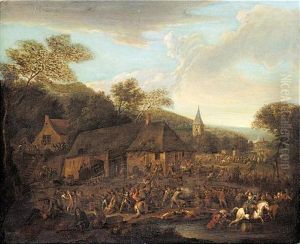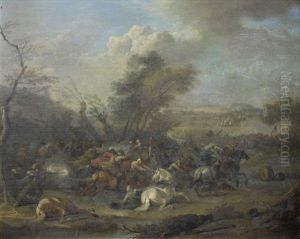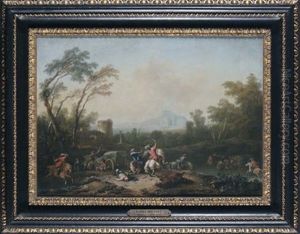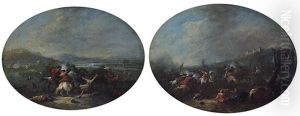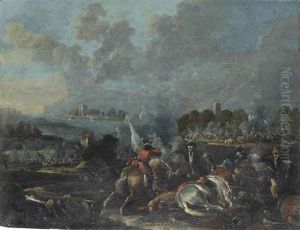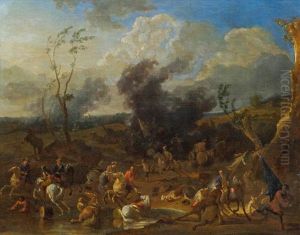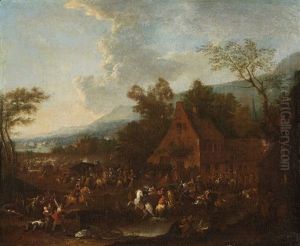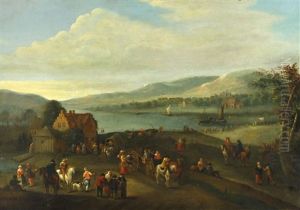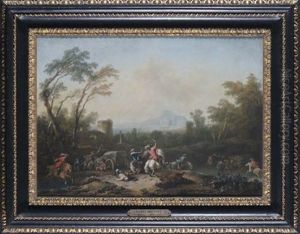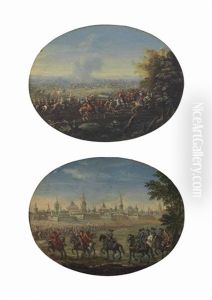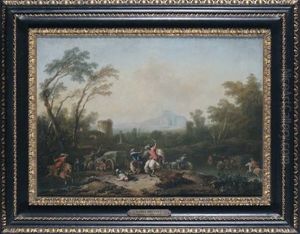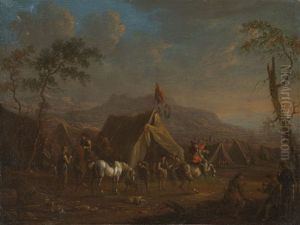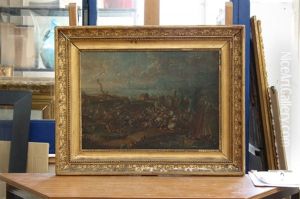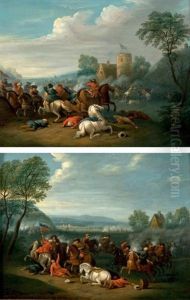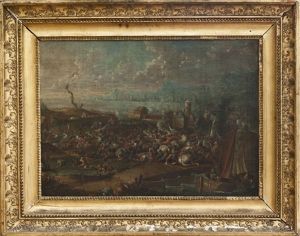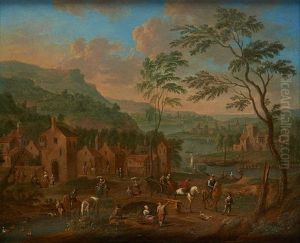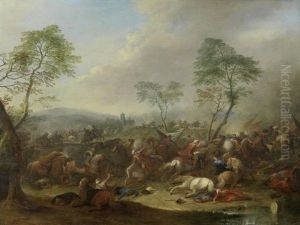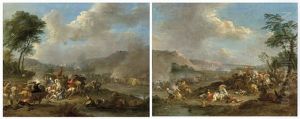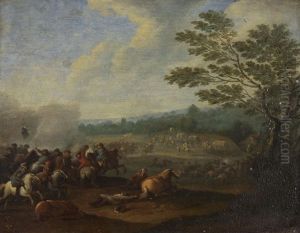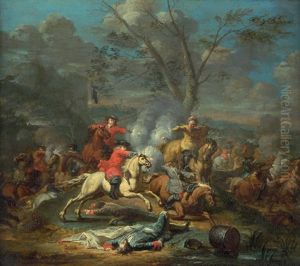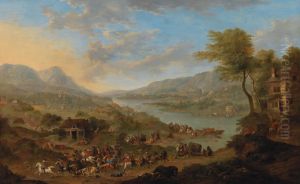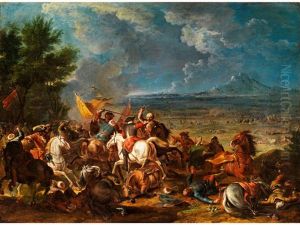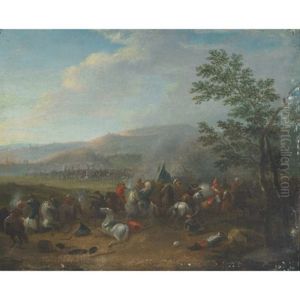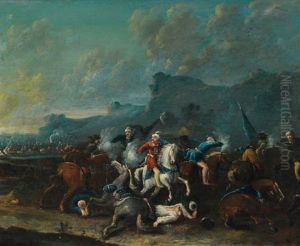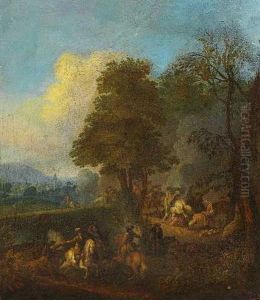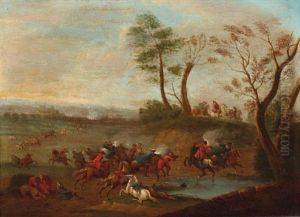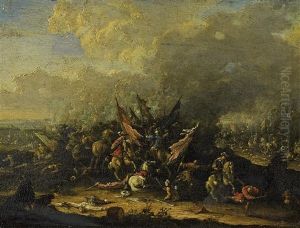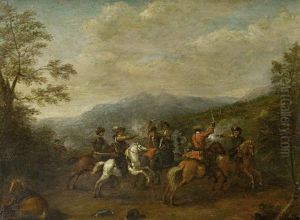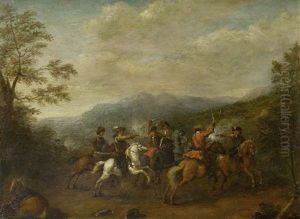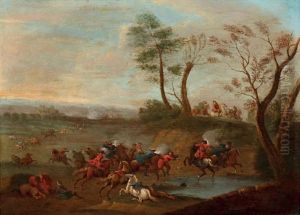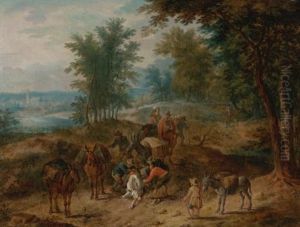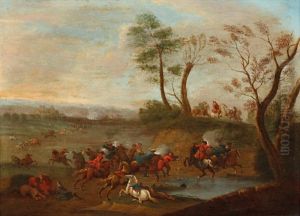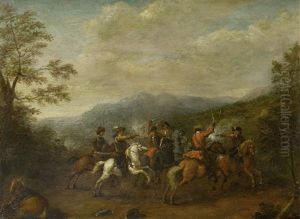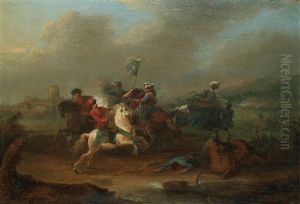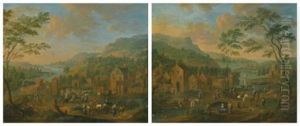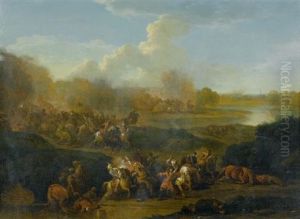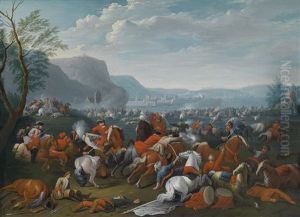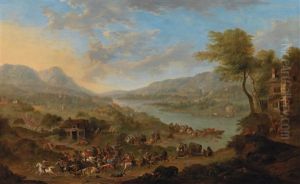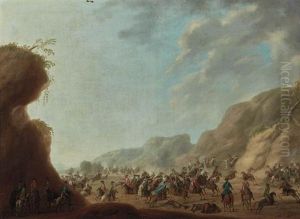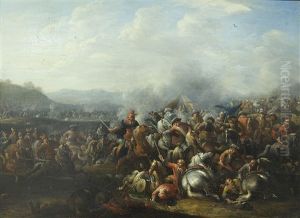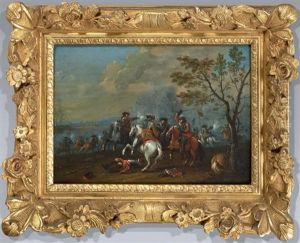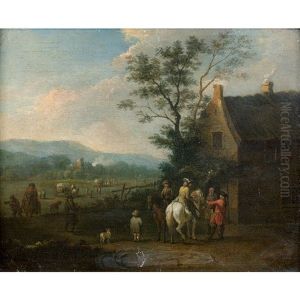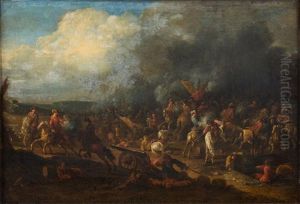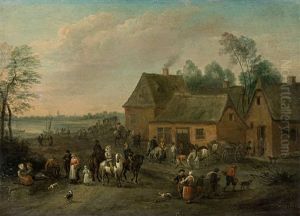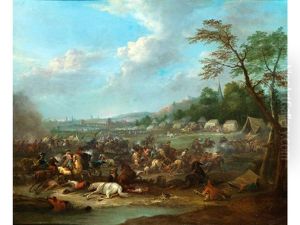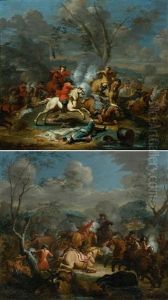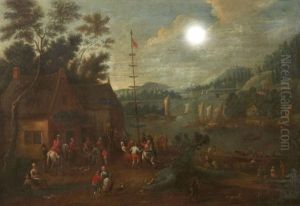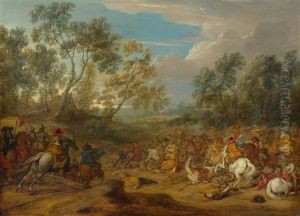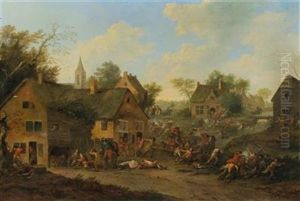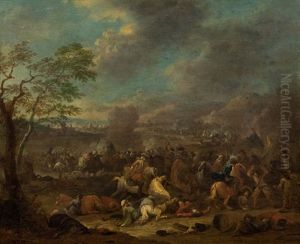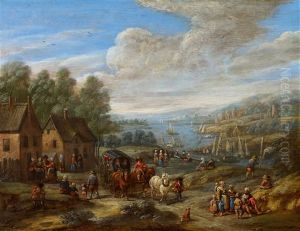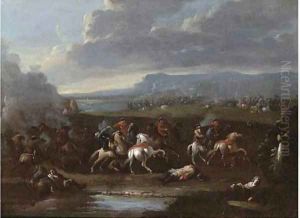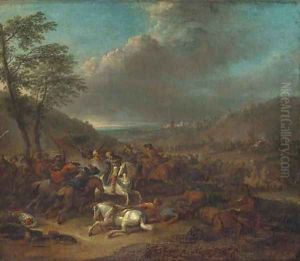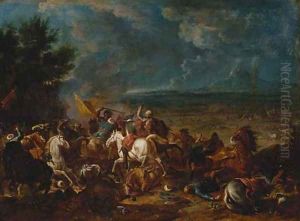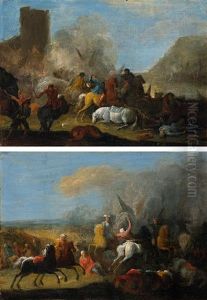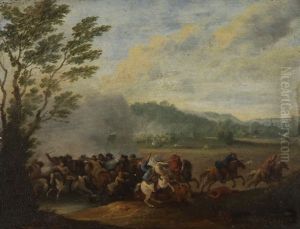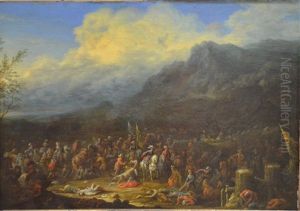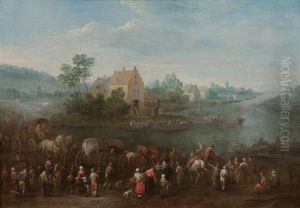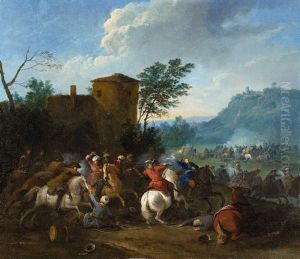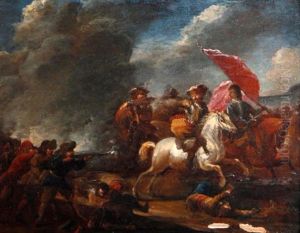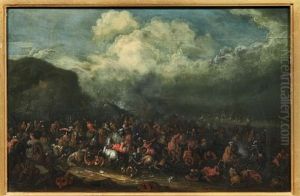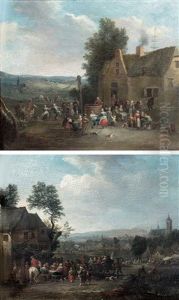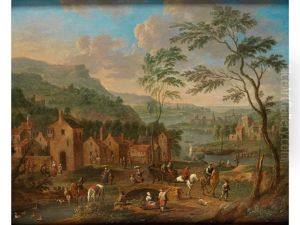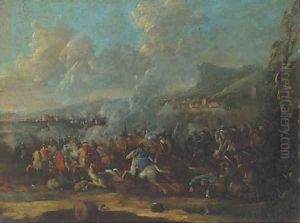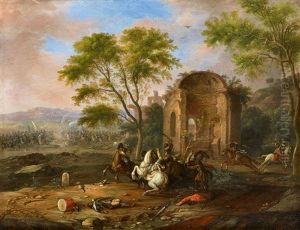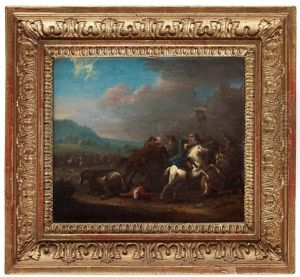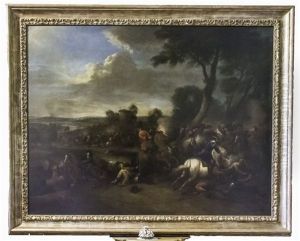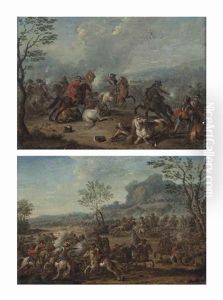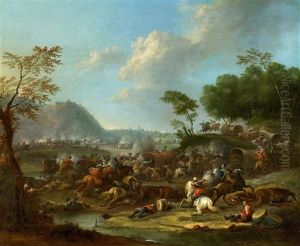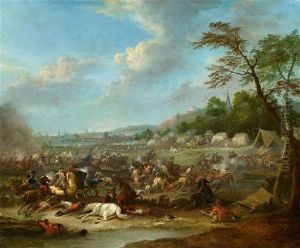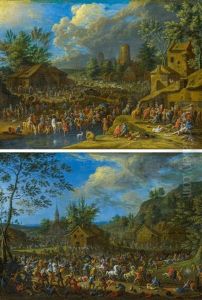Karel Breydel Paintings
Karel Breydel, also known as Charles Breydel, was a Flemish painter and engraver born in Antwerp in 1678. He is often remembered for his contributions to the genres of battle scenes and landscapes, marking him as a notable figure in the Flemish painting tradition of the 17th and early 18th centuries. Despite the era's leaning towards Baroque influences, Breydel's work displayed a unique blend of the vibrant energy typical of Baroque art with a keen eye for detail, particularly in his depictions of horses and military engagements.
Breydel's early life was steeped in the rich artistic environment of Antwerp, a city renowned for its thriving arts scene. Little is known about his early training, but it is speculated that he was influenced by the works of Pieter Meulener and Adam Frans van der Meulen, artists celebrated for their battle scenes and landscapes. Breydel's talent for capturing the dynamism of battle and the serene beauty of landscapes quickly earned him the nickname 'Chevalier Breydel,' a testament to his exceptional skill in painting horses.
Throughout his career, Karel Breydel traveled extensively, which greatly influenced his artistic style. His travels took him to several European countries, including Italy, France, and Germany, where he was exposed to a variety of artistic techniques and styles. This exposure is evident in the diversity of his work, which includes not only battle scenes and landscapes but also genre scenes, portraits, and religious subjects.
Despite his talent and the breadth of his work, Breydel did not achieve the same level of fame as some of his contemporaries. Nevertheless, his contributions to Flemish art have not gone unnoticed. His works are characterized by their lively composition, attention to detail, and the ability to convey movement and emotion, qualities that continue to be appreciated by art historians and collectors alike.
Karel Breydel passed away in Antwerp in 1733. Today, his paintings can be found in various museums and private collections, serving as enduring examples of the vibrant Flemish painting tradition. Through his distinctive blend of battle scenes and landscapes, Breydel has left an indelible mark on the history of Flemish art, cementing his legacy as an important figure in the transition from the Baroque to the Rococo style.
